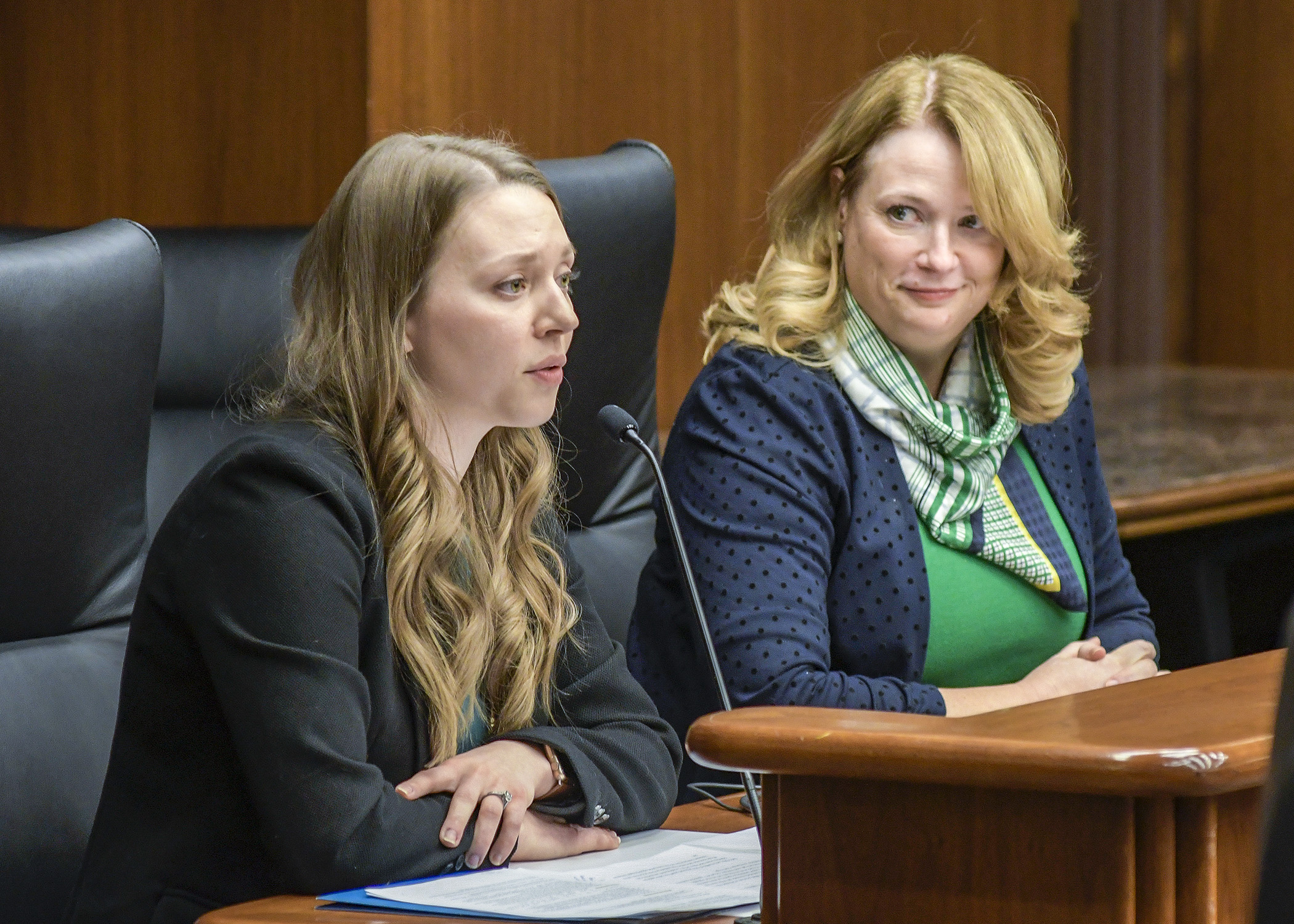Vaping could be kicked outside under proposed change to Clean Indoor Air Act

Clouds of vapor scented like gummy bears and crème brulee could be exiled from indoor spaces by a bill that would exclude the use of e-cigarettes wherever smoking is already banned.
HF349, sponsored by Rep. Laurie Halverson (DFL-Eagan), would modify the Minnesota Clean Indoor Air Act to include “activated electronic delivery devices” used for vaping under its definitions of “smoking” and include products derived from nicotine, tobacco, marijuana, other plants, and synthetics intended for inhalation.
The bill was approved, as amended, by the House Health and Human Services Policy Division Tuesday and re-referred to the House Commerce Committee. A companion, SF349, sponsored by Sen. Carla Nelson (R-Rochester), awaits action by the Senate Health and Human Services Finance and Policy Committee.
The bill would prohibit vaping on public transportation, at public meetings, in places of employment, health care facilities and clinics, public schools, state and local government buildings, buildings owned by public colleges and universities, facilities licensed by the Department of Human Services and the Department of Health, and places where day care services are being provided.
Business owners and local governments would be permitted to adopt a stricter prohibition.
Twenty-five counties and 31 cities have already added e-cigarettes to their clean indoor air policies, according to ClearWay Minnesota, an organization that aims to reduce tobacco use and exposure.
Similar measures enacted at the local level in communities, including Duluth and Mankato, haven’t shown any negative impacts to local businesses, and a study conducted by Blue Cross Blue Shield revealed that more than 80 percent of Minnesotans support the prohibition, said Emily Myatt, Minnesota grassroots manager for the American Cancer Society Cancer Action Network.
Parents don’t want to expose their children to behavior that “glamorizes” and “re-normalizes” smoking, she said.
The percentage of teens using tobacco has begun increasing after years of decline, largely due to the availability and popularity of vaping devices, Halverson said
The Centers for Disease Control Prevention reports 1.5 million more youth were e-cig users in 2018 than 2017, she said.
E-cigs are highly addictive, as one cartridge can have the same amount of nicotine as a pack of cigarettes. Nicotine consumption by young people impacts brain development and primes the brain for other addictions. In addition, using e-cigarettes makes teenagers more likely to experiment with other tobacco products, Halverson said.
Cap O’Rourke, representing the Independent Vapor Retailers of Minnesota, said that the proposed legislation mistakenly indicates that vaping has dangerous secondhand effects when it doesn’t, and that legislators have failed to recognize the importance of vaping as a way for smokers to scale back their nicotine intake and successfully quit smoking.
He acknowledged that some of the most popular convenience store varieties of e-cigarettes can have incredibly high nicotine levels. But small businesses involved in the industry have products with a much wider – and much lower – range of nicotine levels, he said.
Minnesotans who would be most impacted by the bill would be people who vape in the workplace as they try to stop smoking – some of whom could be inhaling products with little to no nicotine. If the bill was enacted, these people would be forced outside along with cigarette smokers and could go back to smoking more easily, he said.
Halvorson said e-cigarettes are not actually tools to quit smoking, as they are not FDA-approved or used in consultation with a doctor.
“E-cigarettes are simply another tool for addiction,” Halverson said. “It’s the same old wolf. Different sheep’s clothing.”
Related Articles
Search Session Daily
Advanced Search OptionsPriority Dailies
Ways and Means Committee OKs proposed $512 million supplemental budget on party-line vote
By Mike Cook Meeting more needs or fiscal irresponsibility is one way to sum up the differences among the two parties on a supplemental spending package a year after a $72 billion state budg...
Meeting more needs or fiscal irresponsibility is one way to sum up the differences among the two parties on a supplemental spending package a year after a $72 billion state budg...
Minnesota’s projected budget surplus balloons to $3.7 billion, but fiscal pressure still looms
By Rob Hubbard Just as Minnesota has experienced a warmer winter than usual, so has the state’s budget outlook warmed over the past few months.
On Thursday, Minnesota Management and Budget...
Just as Minnesota has experienced a warmer winter than usual, so has the state’s budget outlook warmed over the past few months.
On Thursday, Minnesota Management and Budget...